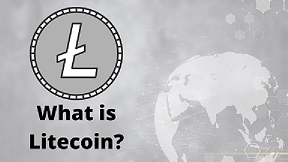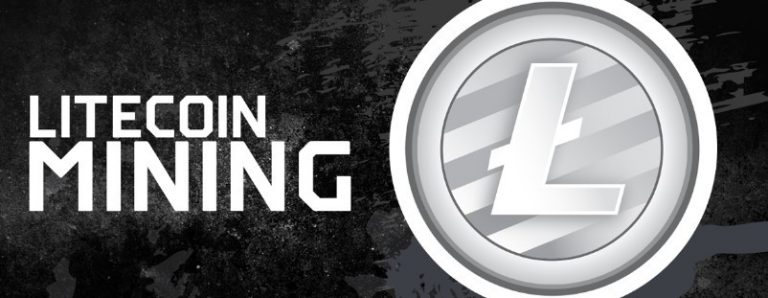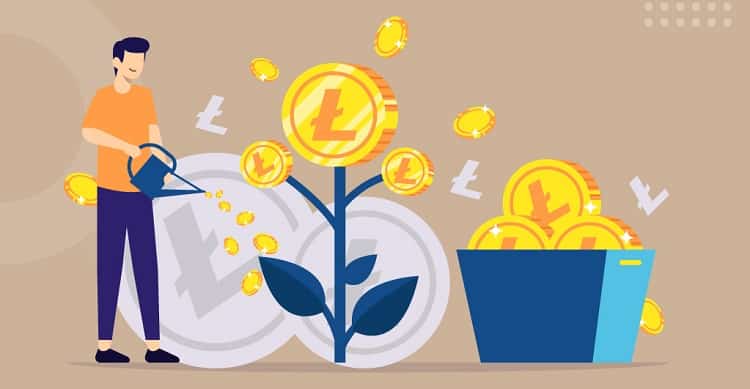The Litecoin FAQ section informs everyone about the key issues that relate to one of the most popular cryptocurrencies – Litecoin. As you know, Litecoin is one of the main rivals of Bitcoin. You will find background information below that will help you to understand the features of Litecoin.
Contents:
- Litecoin FAQ. What is LTC and where to store it?
- Litecoin creator. Differences between Bitcoin and Litecoin
- Mining LTC and PPS Ratio. Answers from Litecoin FAQ
- Disadvantages of Litecoin and reasons for investing in cryptocurrency
1. Litecoin FAQ. What is LTC and where to store it?
1.1. What is Litecoin?
Litecoin (LTC) — an open source peer-to-peer cryptocurrency and software project, released under the MIT / X11 license. Litecoin is one of the largest, oldest and most used cryptocurrencies in the world. Similar to Bitcoin, Litecoin uses blockchain technology to process transactions. So what’s the difference? It takes 2.5 minutes to process a Litecoin block, while Bitcoin takes 10 minutes. This allows for shorter processing times. Litecoin can also be issued with a total of 84 million coins versus 21 million bitcoins. The coin has no central authority and is not supported by the government or bank.

1.2. Where can Litecoin be stored safely?
Litecoin (and other cryptocurrencies) are stored in a digital wallet. When storing Litecoins, you must make sure that the place where you store them is reliable. This is why it is best to store them through an e-wallet. It is highly recommended that you do not store your Litecoins on exchanges (e.g. Coinbase, Poloniex, Bittrex, etc.) because you do not manage private keys. If an exchange ever goes offline or becomes insolvent, your Litecoin will disappear simply.
| Other storage options for Litecoin |
| Electrum Lightweight Wallet |
| Official Core Wallet | LiteVault Secure Web Wallet | Paper Wallet Generator |
If you are a fan of mobile devices, then Loafwallet is your Litecoin wallet. Developed by a member of the Litecoin community, this mobile wallet works great! Hardware wallets are another great option. In fact, they are believed to be the safest way to store cryptocurrencies. You will find a list of flexible Litecoin hardware wallets below.
| Hardware wallets for storing Litecoin |
| Ledger |
| Trezor | Keepkey |
2. Litecoin creator. Differences between Bitcoin and Litecoin
2.1. Creator of the Litecoin cryptocurrency
Charlie Lee, a software engineer at Google, became Coinbase’s director of design, development and creation of Litecoin. Lee sold and donated all of his Litecoins, citing a “conflict of interest,” but he is still active in the development of Litecoin. Lee sits on the board of directors of the Litecoin Foundation, w
hose mission – to “promote Litecoin for the good of society by developing and promoting modern blockchain technologies.”
2.2. Differences between Litecoin and Bitcoin
Since Litecoin was actually a fork of Bitcoin back in 2011, it is based on some of the most original blockchain technologies. According to their developers, Litecoin’s goal from the very beginning was to create a silver standard for the Bitcoin gold standard. While Litecoin promotes many of the positive qualities that Bitcoin offers, there are a few key
differences:
- Hash rate
One of the biggest changes was the reduction in block processing time. Blocks in the bitcoin chain are processed on average every 10 minutes. The Litecoin blockchain has cut this down to an average of 2.5 minutes, resulting in faster confirmation of transactions.
- Total coin supply
Another difference is the total number of coins. While Bitcoin will never exceed 21 million coins, Litecoin has increased this limit to 84 million. Since both coins are divided after a few decimal places, the actual effect of this may be negligible. Both coins must be readily available to buy, sell and use for goods and / or services.
- Cryptographic algorithms
Technically speaking, the biggest difference between the two coins lies in the cryptographic algorithms they use. While both use the (PoW) protocol, Bitcoin uses the more widely used SHA-256 algorithm, whereas Litecoin uses a newer algorithm known as Scrypt. Both are used to mine new coins by validating and adding new blocks to the blockchain. Scrypt was designed to be less susceptible to mining non-standard hardware (ASIC), making Litecoin mining more accessible to everyone.
3. Mining LTC and PPS Ratio. Answers from Litecoin FAQ
3.1. Will mining Litecoin be profitable for you?
It depends on many factors, including your hardware, electricity cost and the market price of Litecoin. In practice, you can only profit from using ASIC hardware (application specific) currently.
3.2. Can Bitcoin ASIC miner be used to mine Litecoin?
No, you need an ASIC to mine Litecoin. Litecoin and Bitcoin use two completely different hashing algorithms (scrypt and SHA-256d respectively).
3.3. What is PPS Ratio?
A PPS ratio of 1 (or 100%) corresponds to the expected returns of a Litecoin solo miner in an ideal world, excluding aspects such as orphaned blocks. We say “expected” income because mining is a random process and, therefore, it is impossible to determine in advance exactly how much a miner will earn in a given period of time.
Thanks to merged mining, which allows mining several cryptocurrencies at the same time, it is possible to achieve PPS ratios above 100%. This is not related to what the “profit switching” pools do, as in merged mining, all chains are mined at the same time. For this reason, merged mining does not cause sudden bursts of problems and does not harm any of the involved networks.
3.4. Is there a pool fee?
No, even the nominal PPS fee was removed when pooled mining was introduced. In fact, the “fee” is negative now: the PPS ratio is currently 101%, which means miners are earning 1% more than with a 0 reward PPS system.
4. Disadvantages of Litecoin and reasons for investing in cryptocurrency
4.1. Disadvantages of Litecoin currency
Like everything close to perfect, the Litecoin system has its drawbacks. They are specific, but undeniable:
In most countries, Litecoins are not considered legal tender. They do not keep reporting and tax documentation, they cannot be paid in many stores, including virtual ones.
You are responsible for the safety of your wallet. In this respect, cryptocurrency is much closer to traditional paper money than virtual money. If you lose your wallet file, no one can reimburse you for the loss, just as you cannot reprint a lost banknote. Therefore, you must back up the file and monitor its safety yourself.
There are other downsides, although they are controversial. For example, is it a disadvantage that the rights of users of the Litecoin system are not legally protected? The rights of holders of traditional currencies are protected, but they are still constantly deceived, and money is stolen, blocked in accounts and devalued. Litecoin owners still find themselves in a better position, although they have less guarantees.
4.2. Why should you invest in a virtual foreign exchange company?
Of course, to increase the assets of your virtual cryptocurrency LTC! Or something more noble, like funding a project for a bigger cause. Of course, things are not always rosy, you can also lose your coins! Alas, no one is immune from this problem.










